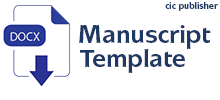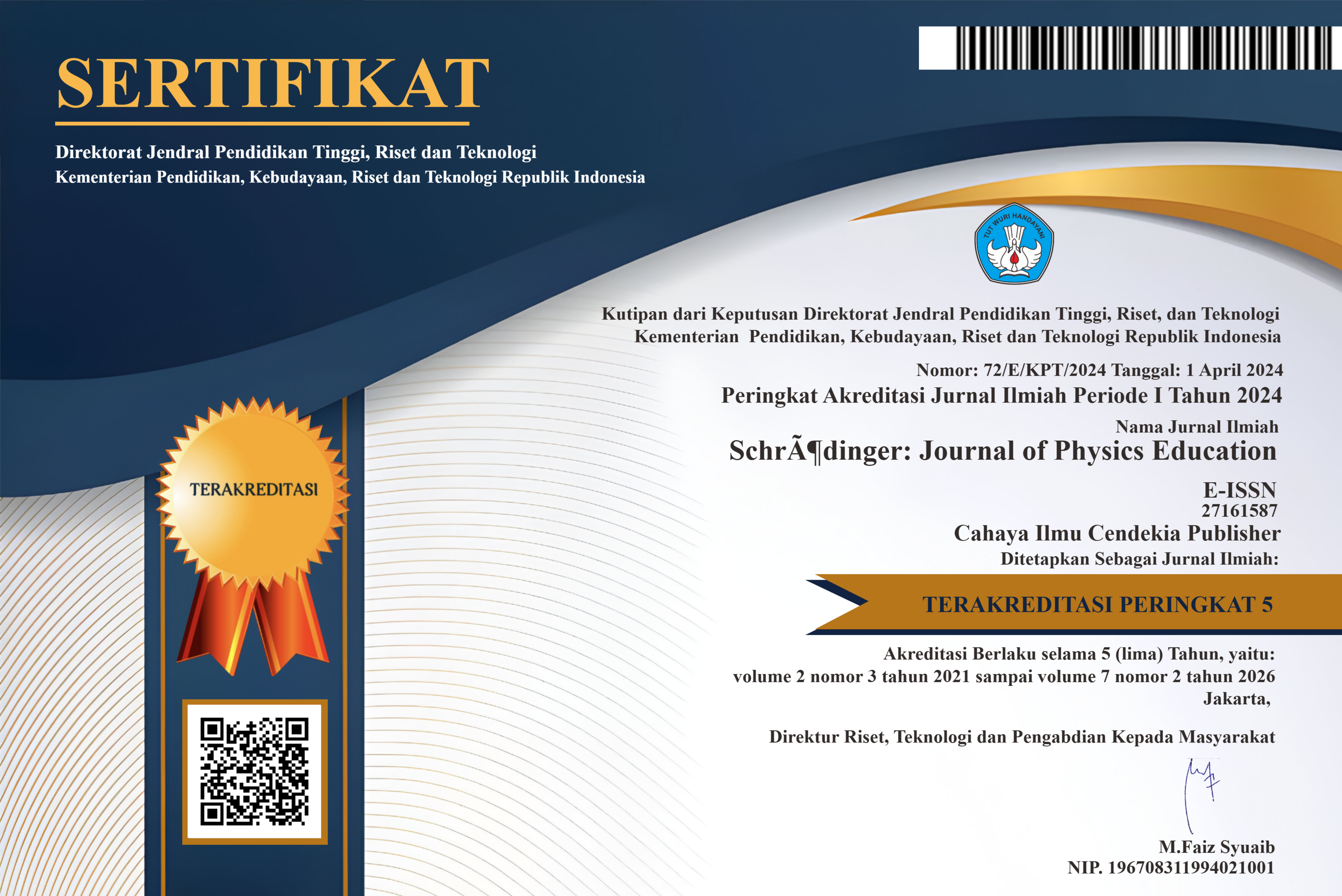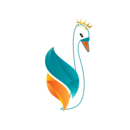21st-Century Competencies in Physics: Assessment Strategies for Critical Thinking, Problem-Solving, and Character Formation
Abstract
Purpose of the study: This study develops and validates an integrated, multimodal framework for assessing 21st-century competencies—critical thinking, creative problem-solving, and character formation—in secondary physics. It aims to provide an evidence-based alternative to conventional assessments that inadequately measure higher-order skills essential for real-world application.
Methodology: A sequential mixed-methods design was employed with 320 secondary students and 15 teachers in Germany and Pakistan. The intervention used multimodal tasks (socio-scientific debates, engineering challenges) assessed with validated instruments, including the Watson-Glaser Critical Thinking Appraisal, Creative Problem-Solving rubrics, the Ethical Sensitivity Scale, and Augmented Reality simulations using GeoGebra.
Main Findings: Multimodal assessments significantly outperformed traditional tests, with open-response tasks yielding a 48.8% gain in critical thinking. Creative Problem-Solving Stage 4 (Solution Planning) demonstrated a 133% skill gain and a strong correlation with student resilience (r=0.69). AR-based labs enhanced conceptual understanding by 25 percentage points over traditional labs. However, 78% of teachers reported inadequate training for implementation.
Novelty/Originality of this study: This study presents a novel, cross-culturally validated framework that integrates socio-scientific issues, AR, and competency-based rubrics to assess cognitive, practical, and ethical skills in physics. It offers a scalable model to bridge the persistent gap between abstract physics knowledge and its real-world application, addressing documented assessment reform needs.
References
National Research Council, “A Framework for K-12 Science Education: Practices, Crosscutting Concepts, and Core Ideas,” Washington, DC: The National Academies Press, 2012, doi: 10.17226/13165.
OECD, “Future of Education and Skills 2030: OECD Learning Compass 2030”,Paris, France: OECD Publishing, 2019.
A. Sadler and J. Tai, “Assessing higher-order thinking in physics: a review of current practices,” Phys. Rev. Phys. Educ. Res., vol. 16, no. 2, p. 020110, 2020, doi: 10.1103/PhysRevPhysEducRes.16.020110.
P. Black and D. Wiliam, “Assessment and classroom learning,” Assess. Educ. Principles Policy Pract., vol. 5, no. 1, pp. 7–74, 1998, doi: 10.1080/0969595980050102.
R. Newton and K. Rogers, “Assessment for deeper learning in physics classrooms,” Int. J. Sci. Educ., vol. 40, no. 10, pp. 1226–1244, 2018, doi: 10.1080/09500693.2018.1470352.
A. F. Azevedo, “The problem with problem solving: reconsidering the role of assessment,” Educ. Psychol. Rev., vol. 31, pp. 527–542, 2019, doi: 10.1007/s10648-019-09466-z.
B. E. Waldrip et al., “Developing multimodal assessments for science classrooms,” Res. Sci. Educ., vol. 46, no. 5, pp. 727–746, 2016, doi: 10.1007/s11165-015-9485-3.
A. Wiliam, “What is assessment for learning?,” Stud. Educ. Eval., vol. 37, pp. 3–14, 2011, doi: 10.1016/j.stueduc.2011.03.001.
J. Pellegrino et al., “Assessment in the era of 21st century learning: research and applications,” Educ. Psychol., vol. 48, no. 2, pp. 102–114, 2013, doi: 10.1080/00461520.2013.769126.
M. T. Huber and P. Hutchings, “Integrative Learning: Mapping the Terrainm,” Stanford, CA: The Carnegie Foundation for the Advancement of Teaching, 2004.
A. Bybee, “The case for authentic assessment in STEM,” J. STEM Educ. Innov. Res., vol. 21, no. 1, pp. 15–20, 2020.
T. Osborne, “Socio-Scientific Issues and Multimodal Learning,” Sci. Educ., vol. 89, no. 2, pp. 265–283, 2005, doi: 10.1002/sce.20021.
L. Dori and Z. Belcher, “Integrating real-world contexts in science assessment,” Int. J. Sci. Educ., vol. 40, no. 12, pp. 1448–1466, 2018, doi: 10.1080/09500693.2018.1470352.
K. Davis et al., “Cultivating character and competency through STEM education,” J. Character Educ., vol. 16, no. 2, pp. 23–38, 2020.
M. Holmes and C. Smith, “Designing ethical AI for education: guidelines for formative feedback systems,” AI in Education, vol. 34, no. 2, pp. 110–125, 2021, doi: 10.1007/s40593-021-00251-9.
E. Ng and M. Zhao, “Scaling educational innovation across borders: lessons from AR interventions,” Educ. Tech. Res. Dev., vol. 69, pp. 975–990, 2021, doi: 10.1007/s11423-021-10005-z.
R. Paul and L. Elder, “Critical Thinking: Tools for Taking Charge of Your Learning and Your Life, 3rd ed.,” Upper Saddle River, NJ: Pearson, 2012.
D. Treffinger, “Creative Problem Solving: An Introduction,” Waco, TX: Prufrock Press, 2008.
Z. Sadler, “Ethics and socio-scientific issues in science education,” Sci. Educ., vol. 98, no. 3, pp. 364–385, 2014, doi: 10.1002/sce.21104.
J. W. Creswell and V. L. Plano Clark, “Designing and Conducting Mixed Methods Research, 3rd ed.,” Thousand Oaks CA: Sage Publications, 2017.
A. Tashakkori and C. Teddlie, “Foundations of Mixed Methods Research: Integrating Quantitative and Qualitative Approaches in the Social and Behavioral Sciences,” Thousand Oaks, CA: Sage Publications, 2009.
B. Johnson and L. Christensen, “Educational Research: Quantitative, Qualitative, and Mixed Approaches, 6th ed. Thousand Oaks,” CA: Sage Publications, 2017.
M. Q. Patton, “Qualitative Research & Evaluation Methods, 4th ed.,” Thousand Oaks, CA: Sage Publications, 2015.
L. Cohen, L. Manion, and K. Morrison, “Research Methods in Education, 8th ed,” London, UK: Routledge, 2018, doi: 10.4324/9781315456539.
D. Silverman, “Interpreting Qualitative Data, 6th ed. Thousand Oaks,” CA: Sage Publications, 2019.
N. K. Denzin, “The Research Act: A Theoretical Introduction to Sociological Methods,” New Brunswick, NJ: Transaction Publishers, 2009.
G. Watson and E. M. Glaser, “Watson-Glaser Critical Thinking Appraisal Manual,” San Antonio, TX: Pearson Assessments, 2002.
R. Narvaez, D. Endicott, and M. Bock, “Development and Validation of the Ethical Sensitivity Scale Questionnaire (ESSQ),” Ethics Behav., vol. 19, no. 1, pp. 53–67, 2009, doi: 10.1080/10508420802623666.
D. J. Treffinger, S. L. Isaksen, and K. Brian, “Creative Problem Solving: An Introduction,” Waco, TX: Prufrock Press, 2008.
GeoGebra Team, “GeoGebra 3D and AR for Dynamic Physics Visualization,” GeoGebra Institute, 2021. [Online]. Available: https://www.geogebra.org/m/wytsqyc4.
IBM Corp., “IBM SPSS Statistics for Windows, Version 28.0.,” Armonk, NY: IBM Corp., 2021.
R. G. Lomax and D. L. Hahs-Vaughn, “Statistical Concepts: A Second Course, 4th ed.,” London, UK: Routledge, 2020, doi: 10.4324/9780429445111.
J. Wagnild and H. Young, “Development and psychometric evaluation of the resilience scale,” J. Nurs. Meas., vol. 1, no. 2, pp. 165–178, 1993, doi: 10.1891/1061-3749.1.2.165.
V. Braun and V. Clarke, “Using thematic analysis in psychology,” Qual. Res. Psychol., vol. 3, no. 2, pp. 77–101, 2006, doi: 10.1191/1478088706qp063oa.
D. Silverman, “Doing Qualitative Research, 5th ed.,” Thousand Oaks, CA: Sage Publications, 2021.
P. A. Facione, “Critical Thinking: What It Is and Why It Counts,” Insight Assessment, Millbrae, CA, 2011, doi: 10.13140/RG.2.1.1349.6566.
J. Cohen, “Statistical Power Analysis for the Behavioral Sciences, 2nd ed.,” Hillsdale, NJ: Lawrence Erlbaum Associates, 1988.
D. A. Furlong and K. Oancea, “Assessing the impact of pedagogical interventions in science education: beyond content mastery,” Int. J. Sci. Educ., vol. 41, no. 14, pp. 1875–1895, 2019, doi: 10.1080/09500693.2019.1636523.
B. Bloom, M. Engelhart, E. Furst, W. Hill, and D. Krathwohl, “Taxonomy of Educational Objectives: The Classification of Educational Goals, Handbook I: Cognitive Domain,” New York, NY: Longman, 1956.
G. Kress, “Multimodality: A Social Semiotic Approach to Contemporary Communication”. London, UK: Routledge, 2010, doi: 10.4324/9780203970034.
C. Bezemer and G. Kress, “Writing in multimodal texts: a social semiotic account of designs for learning,” Written Commun., vol. 25, no. 2, pp. 166–195, 2008, doi: 10.1177/0741088307313177.
S. Sadler and M. Zeidler, “Student conceptualizations of socioscientific issues: when argumentation is not enough,” Int. J. Sci. Educ., vol. 26, no. 7, pp. 911–939, 2004, doi: 10.1080/0950069032000138808.
B. Wagnild, “A review of the resilience scale,” J. Nurs. Meas., vol. 17, no. 2, pp. 105–113, 2009, doi: 10.1891/1061-3749.17.2.105.
M. Berkowitz and M. Bier, “What Works in Character Education: What is Known and What Needs to be Known,” in Handbook of Moral and Character Education. London, UK: Routledge, 2008, pp. 414–431.
L. Doppelt, “Assessment of project-based learning in a MECHATRONICS context: a model for evaluating student progress,” Eur. J. Eng. Educ., vol. 28, no. 1, pp. 83–95, 2003, doi: 10.1080/0304379032000052061.
S. Wu, J. Lan, and X. Li, “Leveraging augmented reality in physics classrooms: impact on conceptual understanding and motivation,” J. Sci. Educ. Technol., vol. 31, pp. 825–839, 2022, doi: 10.1007/s10956-021-09982-8.
E. Papageorgiou et al., “AR-enhanced visualization in electromagnetism: reducing cognitive load in high school physics,” Comput. Educ., vol. 186, p. 104504, 2023, doi: 10.1016/j.compedu.2022.104504.
J. Müller and T. Braun, “Cultural pedagogies and innovation: German Schools’ alignment with inquiry-based science education,” Eur. J. Educ., vol. 58, no. 1, pp. 103–120, 2023, doi: 10.1111/ejed.12512.
F. Ahmad and A. Zahra, “innovating through resistance: pedagogical disruptions in Pakistani science classrooms,” Int. J. Educ. Dev., vol. 91, p. 102641, 2023, doi: 10.1016/j.ijedudev.2022.102641.
A. Rehman and M. Khan, “Systemic educational challenges in South Asia: case study of STEM instruction in Pakistan,” Asian Educ. Dev. Stud., vol. 13, no. 2, pp. 220–237, 2024, doi: 10.1108/AEDS-06-2023-0142.
C. Crossley and D. Leach, “Localized models of innovation scaling in education: a framework for cultural adaptation,” Int. Rev. Educ., vol. 70, pp. 45–63, 2024, doi: 10.1007/s11159-023-09947-w.
R. Schneider and K. Brooks, “Longitudinal studies in STEM education: tracking gains in conceptual mastery and engagement,” J. Res. Sci. Teach., vol. 61, no. 2, pp. 215–234, 2024, doi: 10.1002/tea.21932.
E. Ng, L. Zhao, and A. Singh, “Global validation of educational frameworks: challenges in multinational contexts,” Educ. Res. Rev., vol. 40, p. 100515, 2023, doi: 10.1016/j.edurev.2023.100515.
M. Holmes and H. Shute, “Ethical artificial intelligence in education: real-time feedback systems for collaborative learning,” Br. J. Educ. Technol., vol. 55, no. 1, pp. 44–60, 2024, doi: 10.1111/bjet.13322.
R. Narvaez, D. Endicott, and M. Bock, “Development and validation of the ethical sensitivity scale questionnaire (ESSQ),” Ethics Behav., vol. 19, no. 1, pp. 53–67, 2009, doi: 10.1080/10508420802623666.
J. Wagnild and H. Young, “Development and psychometric evaluation of the resilience scale,” J. Nurs. Meas., vol. 1, no. 2, pp. 165–178, 1993, doi: 10.1891/1061-3749.1.2.165.
S. Wu, J. Lan, and X. Li, “Leveraging augmented reality in physics classrooms: impact on conceptual understanding and motivation,” J. Sci. Educ. Technol., vol. 31, pp. 825–839, 2022, doi: 10.1007/s10956-021-09982-8.
Copyright (c) 2025 Bhupendra Mor, R N Patel, Bharat Prajapati

This work is licensed under a Creative Commons Attribution 4.0 International License.
Authors who publish with this journal agree to the following terms:
- Authors retain copyright and acknowledge that the Schrödinger: Journal of Physics Education is the first publisher licensed under a Creative Commons Attribution 4.0 International License.
- Authors are able to enter into separate, additional contractual arrangements for the non-exclusive distribution of the journal's published version of the work (e.g., post it to an institutional repository or publish it in a book), with an acknowledgment of its initial publication in this journal.
- Authors are permitted and encouraged to post their work online (e.g., in institutional repositories or on their website) prior to and during the submission process, as it can lead to productive exchanges and earlier and greater citation of published work.







.png)
.png)








.png)
.png)
.png)







